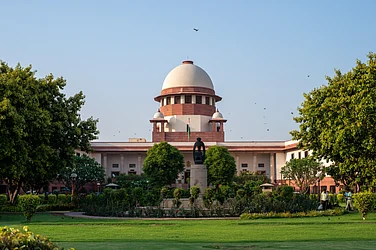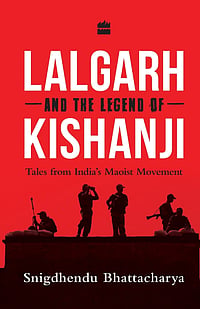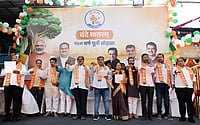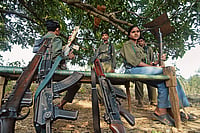When Dhaniram Toto’s novel Dhanua Toto’s Kothamala (Dhanua Toto’s Tales) was published earlier this year, it became the first novel written by a Toto, a small, tribal community with only 1,632 persons speaking the eponymous language. They live in Toto Para in Jalpaiguri district of northern West Bengal, near the Indo-Bhutan border.
Dhaniram wrote it in Bengali. Toto language has no script and even if it were written in Bengali script, the readership would have been understandably negligible. The situation forced them to be trilingual – they speak Toto at home and between members of the tribe, use Nepali in the local markets as the neighbourhood is populated mostly by the Gorkhas, and Bengali is the medium of instruction in the schools where they study. In their numeric system, the higher numbers are counted in the twenties.
Initiatives to preserve the language have been taken by members of the community for the past few years now. Dhaniram, in collaboration with some others, had earlier tried to compile a dictionary of Toto words but it remains unpublished. In 2018, Satyajit Toto started editing a magazine, named Totbiko Loiko Dereng, in which Toto literature in Bengali script was published alongside their Bengali translations. But all such initiatives have been in the personal capacity of a section of the members of the community.
“There has been no governmental support towards the protection of our language. Researchers like Charu Chandra Sanyal, Bimalendu Majumdar and A K Das made documentations from linguistic and anthropological perspectives in their own interests but our culture remains largely undocumented,” he told Outlook.
Currently busy writing his second novel, Dhaniram has decided to spend the rest of his life documenting Toto culture, words and folklore through his fictions. His only worry is family income. His son, Dhananjay, became the first Toto to obtain a master’s degree when he got it in library sciences from the University of North Bengal in 2016. He has not managed to get a job yet. Dhaniram, enlisted as a social worker with the state’s backward classes welfare department, does not earn much.
“I could have focussed entirely on preserving our language and culture if my son got a job. But now I have to split my time between writing and income,” he said. The literary work does not earn him a penny.
Toto, along with many other languages of the Tibeto-Burmese language group spoken across the Himalayan and sub-Himalayan regions – from Kashmir in the west to Arunachal in the east, in India, bordering Tibet, Nepal, Bhutan, Myanmar and Bangladesh – faces similar problems. Most of the Indian languages identified as endangered belong to this family. The 122 languages that the Census of 2001 listed included 66 from the Tibeto-Burmese family, with over 1 crore speakers altogether. Only two of these languages, Manipuri and Bodo, are recognised as Scheduled Languages. But there are many more that remain unlisted. Northern West Bengal, too, has several of them.
Being numerically insignificant, they have found their mother tongues relegated to non-existence in the Census report, which does not include languages spoken by less than 10,000 people. They have been made invisible.
Dhaniram can blame this invisiblisation on a Union government policy adopted in 1971-72 that decided to exclude mother tongues spoken by less than 10,000 people from the Census report.
The 1951 Census report listed 784 languages overall. Apart from 14 constitutional languages, it listed 23 tribal languages (or dialects) with speakers numbering a lakh and more, 24 other Indian languages (or dialects) with speakers numbering 1 lakh and above, and 720 languages or dialects with a speaker strength of less than 1 lakh each – cumulatively spoken by 28.6 lakh people, the majority of them in eastern and northeastern India (15.43 lakh). Another 6.16 lakh speakers in central India, 3 lakh in northwestern India, 2.1 lakh in southern India, 81,172 in western India, 94,491 in northern India and 12,828 in the Andaman & Nicobar islands.
The 1961 census listed 1,652 languages, though the figures were later rationalised at 1,100 when some dialects were counted under languages.
But as a result of the new policy – adopted, ironically, at a time when the Bengali-speaking people of East Pakistan were engaged in a war to thwart West Pakistan’s attempt to impose Urdu on them – the 1971 Census report listed only 108 languages.
Since then, the number has slightly increased - 112 in 1981, 184 in 1991, 234 in 2001 and 270 in 2011.
Toto has remained invisible since 1961, just like Dhimal, spoken in the neighbouring areas of north Bengal. Tamang, almost spoken in north Bengal, made it to the Census report in 1981 and 2011 and was missing in 1971 and 1981.
In the northeast, the hub of India’s endangered languages, Simte, whose speakers live mostly in Manipur along the state’s border with Mizoram and Assam, found mention in the 1961 Census, with a population of 2,818, and then in 2001 Census with a population of 10,275, only to slip out in the 2011 census. Aimol, from the same Kuki-Chin-Zo language group, never became visible since 1961.
India, a land perhaps richest in the world in linguistic diversity, stands witness to governmental apathy towards speakers of minor languages. Even though languages from five different families are spoken in India – Indo-Aryan, Dravidian, Tibeto-Burman, Austro-Asiatic and Andamanese – census data shows it’s mostly the Indo-Aryans that have shown a higher growth rate while most of the endangered languages belong to the four other language families, especially Tibeto-Burman, Austro-Asiatic and Andamanese.
These minor languages would have gone to complete obscurity, had it not been for the publication of the UNESCO world atlas of endangered languages in 2009, which listed 197 languages in India – five having gone extinct, 18 spoken by less than 1,000 people and another 51 languages with a speaker strength between 1,000 and 10,000.
Later, the People’s Linguistic Survey of India’s (PLSI) report - a non-government initiative – said in 2013 that they managed to trace 780 languages, and may have missed another 100, which meant still another 220 languages from the 1,100 figure of the 1960s no longer existed.
Perhaps, the impact of the reports of UNESCO and PLSI forced the government of India to take steps towards the protection and preservation of the languages with a smaller number of speakers. Three schemes were initiated – Scheme for Protection and Preservation of Endangered Languages of India (SPPEL) launched in 2013, the UGC-supported Centres for Endangered Languages in different Central universities and providing funding support to state universities.
Of them, the SPEEL scheme, whose motto is “saving and preserving through digital documentation and archiving of these endangered languages of the country”, has so far listed 117 languages with less than 10,000 speakers for documentation. Of them, they have appointed principal investigators for 43 languages so far and dictionaries in three languages have been compiled. Besides, the central and state universities are working on certain languages.
Dhimal of northern West Bengal and Aimol of Manipur are among the languages to have got a designated ‘principal investigator’, though no work has been published yet.
The total expenditure of the government towards this initiative to protect ‘invisible’ languages has been Rs 45.89 crore in the five years between 2015-16 and 2019-20, Rs.26.10 crore for Centres for Endangered Languages in central universities, Rs. 10.35 crore as funding support to state universities and Rs. 9.44 crore under the SPPEL scheme.
In contrast, the government spent Rs. 643.84 crore on the promotion of Sanskrit in the three years of 2017-18, 2018-19 and 2019-20.


























